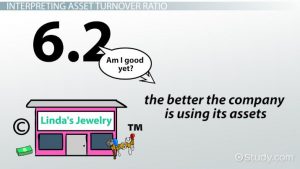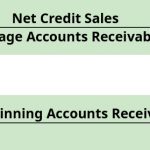
Larry does not use the item of listed property at a regular business establishment, so it is listed property. Larry’s business use of the property (all of which is qualified business use) https://www.intuit-payroll.org/ is 80% in 2021, 60% in 2022, and 40% in 2023. Larry must add an inclusion amount to gross income for 2023, the first tax year Larry’s qualified business-use percentage is 50% or less.
What Is Depreciation in Business?

However, if you change the property’s use to use in a business or income-producing activity, then you can begin to depreciate it at the time of the change. You place the property in service in the business or income-producing activity on the date of the change. You begin to depreciate your property when you place it in service for use in your trade or business or for the production of income. You stop depreciating property either when you have fully recovered your cost or other basis or when you retire it from service, whichever happens first. You can depreciate leased property only if you retain the incidents of ownership in the property (explained below). This means you bear the burden of exhaustion of the capital investment in the property.
Special Considerations
If you use your item of listed property 30% of the time to manage your investments and 60% of the time in your consumer research business, it is used predominantly for qualified business use. Your combined business/investment use for determining your depreciation deduction is 90%. Tara Corporation, with a short tax year beginning March 15 and ending December 31, placed in service on October 16 an item of 5-year property with a basis of $1,000.
- Your depreciation deduction for the stock for the year cannot be more than $25,000 (½ of $50,000).
- In other words, the recording of incomes and expenses should be done on a cause-and-effect basis.
- Attach Form 4562 to your tax return for the current tax year if you are claiming any of the following items.
- Track your mileage for vehicles with the mileage tracking app, organize your assets to measure depreciation, and make tax season a breeze with automated financial report generation.
- The third scenario arises if the company finds an eager buyer willing to pay $80,000 for the old trailer.
How does deprecation affect tax liability?
For a short tax year not beginning on the first day of a month and not ending on the last day of a month, the tax year consists of the number of days in the tax year. You determine the midpoint of the tax year by dividing the number of days in the tax year by 2. If the result of dividing the number of days in the tax year by 2 is not the first day or the midpoint of a month, you treat the property as placed in service or disposed of on the nearest preceding first day or midpoint of a month.

Declining Balance Method

The depreciated cost can also be calculated by deducting the sum of depreciation expenses from the acquisition cost. In accounting, depreciation is an accounting process of reducing the cost of a physical asset over the asset’s useful life to mirror its wear and tear. It can be applied to tangible assets, of which the values decrease as they are used up. Buildings, tax on a child’s investment and other unearned income kiddie tax vehicles, computers, equipment, and computers are some other examples of depreciable assets. Depreciated cost is the remaining cost of an asset after reducing the asset’s original cost by the accumulated depreciation. Understanding the concept of a depreciation schedule and the depreciated cost is important for both accounting and valuation purposes.
Double Declining Balance (DDB) Method
However, see Like-kind exchanges and involuntary conversions, earlier, in chapter 3 under How Much Can You Deduct; and Property Acquired in a Like-kind Exchange or Involuntary Conversion next. You reduce the adjusted basis ($1,000) by the depreciation claimed in the first year ($200). Depreciation for the second year under the 200% DB method is $320. You use the calendar year and place nonresidential real property in service in August. The property is in service 4 full months (September, October, November, and December).
This formula is best for companies with assets that will lose more value in the early years and that want to capture write-offs that are more evenly distributed than those determined with the declining balance method. To illustrate an Accumulated Depreciation account, assume that a retailer https://www.business-accounting.net/expense-report-software/ purchased a delivery truck for $70,000 and it was recorded with a debit of $70,000 in the asset account Truck. Each year when the truck is depreciated by $10,000, the accounting entry will credit Accumulated Depreciation – Truck (instead of crediting the asset account Truck).
Eight in 10 taxpayers use direct deposit to receive their refunds. If you don’t have a bank account, go to IRS.gov/DirectDeposit for more information on where to find a bank or credit union that can open an account online. With an online account, you can access a variety of information to help you during the filing season. You can get a transcript, review your most recently filed tax return, and get your adjusted gross income.
Of the 12 machines, nine cost a total of $135,000 and are used in Sankofa’s New York plant and three machines cost $45,000 and are used in Sankofa’s New Jersey plant. Assume this GAA uses the 200% declining balance depreciation method, a 5-year recovery period, and a half-year convention. Sankofa does not claim the section 179 deduction and the machines do not qualify for a special depreciation allowance. As of January 1, 2023, the depreciation reserve account for the GAA is $93,600. Make & Sell, a calendar year corporation, set up a GAA for 10 machines.
Companies seldom report depreciation as a separate expense on their income statement. Thus, the cash flow statement (CFS) or footnotes section are recommended financial filings to obtain the precise value of a company’s depreciation expense. The depreciation expense, despite being a non-cash item, will be recognized and embedded within either the cost of goods sold (COGS) or the operating expenses line on the income statement. The formula to calculate the annual depreciation expense under the straight-line method subtracts the salvage value from the total PP&E cost and divides the depreciable base by the useful life assumption. The depreciation expense reduces the carrying value of a fixed asset (PP&E) recorded on a company’s balance sheet based on its useful life and salvage value assumption.

No Responses